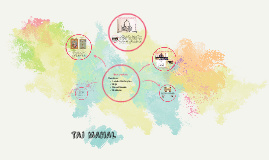Best students
Transcript: Mumtaz Mahal Mumtaz died at young age of 39 years on June 17, 1631 due to postpartum haemorrhage and from complications related to repeated childbirth. These were preventable causes of maternal mortality, which are still common in India today. Despite great advances in medicines and technology in the last 382 years since then, many women in India still suffer the fate of Mumtaz The base structure is a large multi-chambered cube with chamfered corners forming an unequal eight-sided structure that is approximately 55 metres (180 ft) on each of the four long sides. Each side of the iwan is framed with a huge pishtaq or vaulted archway with two similarly shaped arched balconies stacked on either side. This motif of stacked pishtaqs is replicated on the chamfered corner areas, making the design completely symmetrical on all sides of the building. Four minarets frame the tomb, one at each corner of the plinth facing the chamfered corners. The main chamber houses the false sarcophagi of Mumtaz Mahal and Shah Jahan; the actual graves are at a lower level. Inspiration(Dashnyam) Architecture And Design (Purevdaavuu) History of Taj mahal building (ShirBazar) Tomb(Shijir) Members: Header Dashnyam Shijir PurewDaawuu ShirBazar Tomb of the Taj Mahal The buildings are constructed with walls of brick and rubble inner cores Posthumous portrait of Mumtaz Mahal, wife of Mughal Emperor Shah Jahan (1592 - 1666) Construction began in 1632 AD, (1041 AH) In 1631, Shah Jahan, emperor during the Mughal empire's period of greatest prosperity, was grief-stricken when his favorite of three wives and beloved companion, Mumtaz Mahal, a Persian princess, died during the birth of their 14th child, Gauhara Begum. Construction of the Taj Mahal began in 1632. The court chronicles of Shah Jahan's grief illustrate the love story traditionally held as an inspiration for Taj Mahal.The principal mausoleum was completed in 1643 and the surrounding buildings and garden were finished about five years later. Love history of Taj mahal The Taj Mahal, a wonder of the world and world heritage (cultural) site, is a magnificent specimen of Mughal architecture. Most people know the Taj Mahal, a mausoleum in Agra, India, as a monument of love symbolizing the eternal love of a Mughal emperor Shah Jahan towards his wife Mumtaz. However, not many are aware that the Taj Mahal also tells the story of maternal death and, by extension, a host of issues surrounding it that is emblematic of reproductive health in India. The bricks were fired locally and the sandstone was quarried 28 miles (45 km) away near Fatehpur Sikri. Shah Jahan Tomb Taj MAHAL Best students Costs : Initial estimates for the cost of the works of 4,000,000 rupees had risen to 5,000,000 by completion Over 1,000 elephants were used to transport building materials during the construction. Shahabuddin Muhammad Shah Jahan (5 January 1592 – 22 January 1666) The tomb is the central focus of the entire complex of the Taj Mahal. It is a large, white marble structure standing on a square plinth and consists of a symmetrical building with an iwan (an arch-shaped doorway) topped by a large dome and finial. Like most Mughal tombs, the basic elements are Persian in origin. Taj mahal 22.44 hectares (55.5 acres) Architecture And Design

















